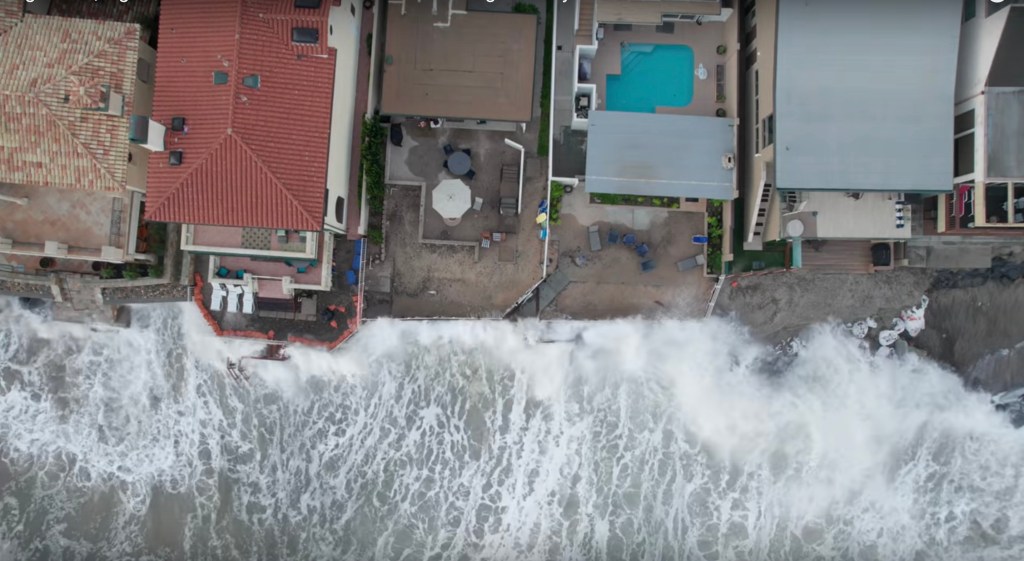
There aren’t many positive things you can say about global warming, but were one pressed to do so it might be that its consequences are at least democratic: Nobody, even the most privileged, escapes its harmful effects. That was reflected last week by amped-up waves battering expensive homes on Southern California’s vulnerable coastline, which a local drone pilot captured on video.
Drone video shows expensive coastal homes battered by unusually powerful summer waves
The extreme surf conditions that slammed Orange County beachside property over the weekend was caught in a drone video filming the unseasonably large, powerful waves. Giving those breakers even more force were exceptionally large tides bringing them higher onto land. Orange County Register photographer Jeff Gritchen was ready for those overlapping factors, and flew his craft over several locales as they were getting the worst of the converging oceanic conditions.
The footage he got of homes worth millions being slammed by walls of crashing water was sufficiently arresting on its own. But as experts on climate change have noted, they’re only one of many previews of the spreading consequences global warming is having around the world – and which are only going to get worse over time.
Gritchen stressed in an email to DroneDJ that the two primary factors caught in his footage are natural, recurring events. Remarkably high Spring Tides occur at least twice per year. Power summer swells are rarer, but do arise – including during very high tidal cycles – including those Gritchen filmed from a helicopter in 1997.
Yet climate change experts say rising water temperatures and shifting current patterns have established a range of consequences that exacerbate – and at times cause – extreme conditions that Southern California experienced last week.
That event occurred as ocean levels that continue to rise as a result of the earth heating up. That has reduced distances between beach front property and the water. That means bigger waves created by more frequent offshore storms during all seasons due to climate change wash up higher – and with stronger impact – once they arrive on land.
If all that weren’t bad enough for homeowners whose backyards or dining rooms open up on the ocean, human efforts to impede advancing seawater have tended to accelerate erosion in surrounding areas, making the very problem being battled even worse.
“I think that these homeowners are in a really difficult situation because it’s not going to get better, it’s only going to get worse,” Donne Brownsey, vice chair of the California Coastal Commission, told the Register, whose article focused on last week’s tide-surf combination, not global warming links to that. “We’ll be with them every step of the way to help them make those tough decisions.”

Selective prevention when it’s already (virtually) too late
Conclusions drawn from watching the drone video (backed up by general warnings from climate change experts) suggest the situation that has become more worrying over time for coastal areas being pummeled will only get worse before they improve – if, that is, truly dramatic steps are finally taken to arrest global warming. In some of the Southern California locales, grimly realistic local authorities have stopped trying to protect land and infrastructure that now appear destined to be taken by the sea, focusing instead on winnable battles.
Some beaches have started disappearing during winter storms, for example, with some never returning once storms pass and gentle currents usually redeposit sand. Others reappear in significantly slimmed-down form, leaving only several feet between the kinds of sidewalks, parking lots and roadways under water after being flushed by waves.
As sea levels rise and coastal erosion leaves fewer barriers between houses and increasingly brutal waves, odds increase that expensive homes on California beaches will go the way all sand castles eventually do. And before long, it is feared, that won’t require the convergence of exceptional events that bore down on Southern California last week.
FTC: We use income earning auto affiliate links. More.



Comments